|
|
 |
|
Gardening Blog
|
 |
|
|
Monday, October 11, 2010
Pretty Containers for Fall
Container gardening is a very popular gardening
trend. Mixed plantings in decorative pots can create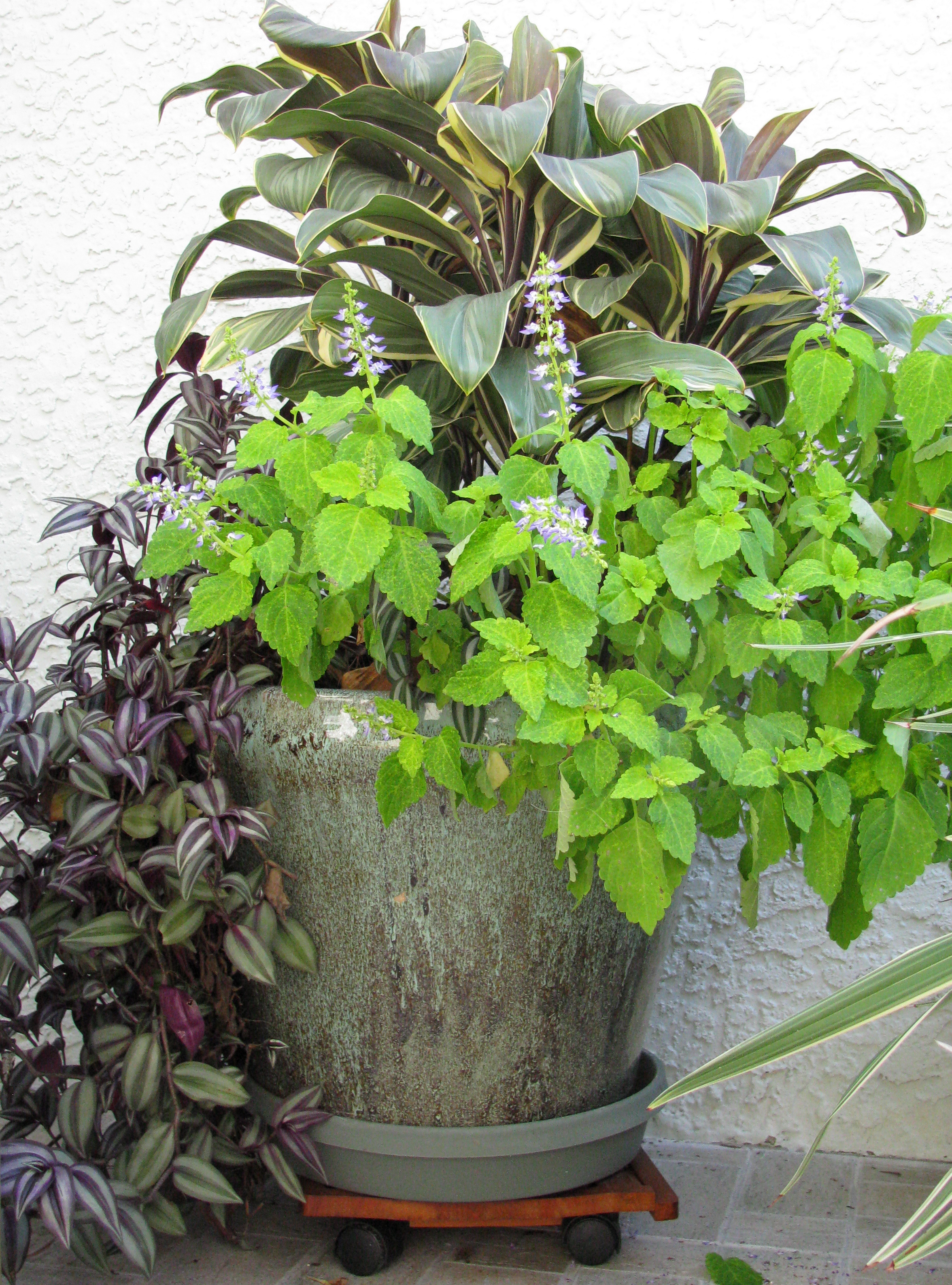 a wonderful focal point in the landscape or on the patio. Containers full
of flowers just seem to grow better during the cooler weather of fall. a wonderful focal point in the landscape or on the patio. Containers full
of flowers just seem to grow better during the cooler weather of fall.
Select the pot first. Large pots can produce a very dramatic effect,
but do consider the final weight of the pot. You may want to provide
a plant stand with casters under large pots to make moving easier if necessary. Shallow
pots are hard to maintain due to the insufficient rooting depth, unless you are planting a cactus garden. Drainage
is very important, so be certain that the pot has adequate drainage holes in the bottom.
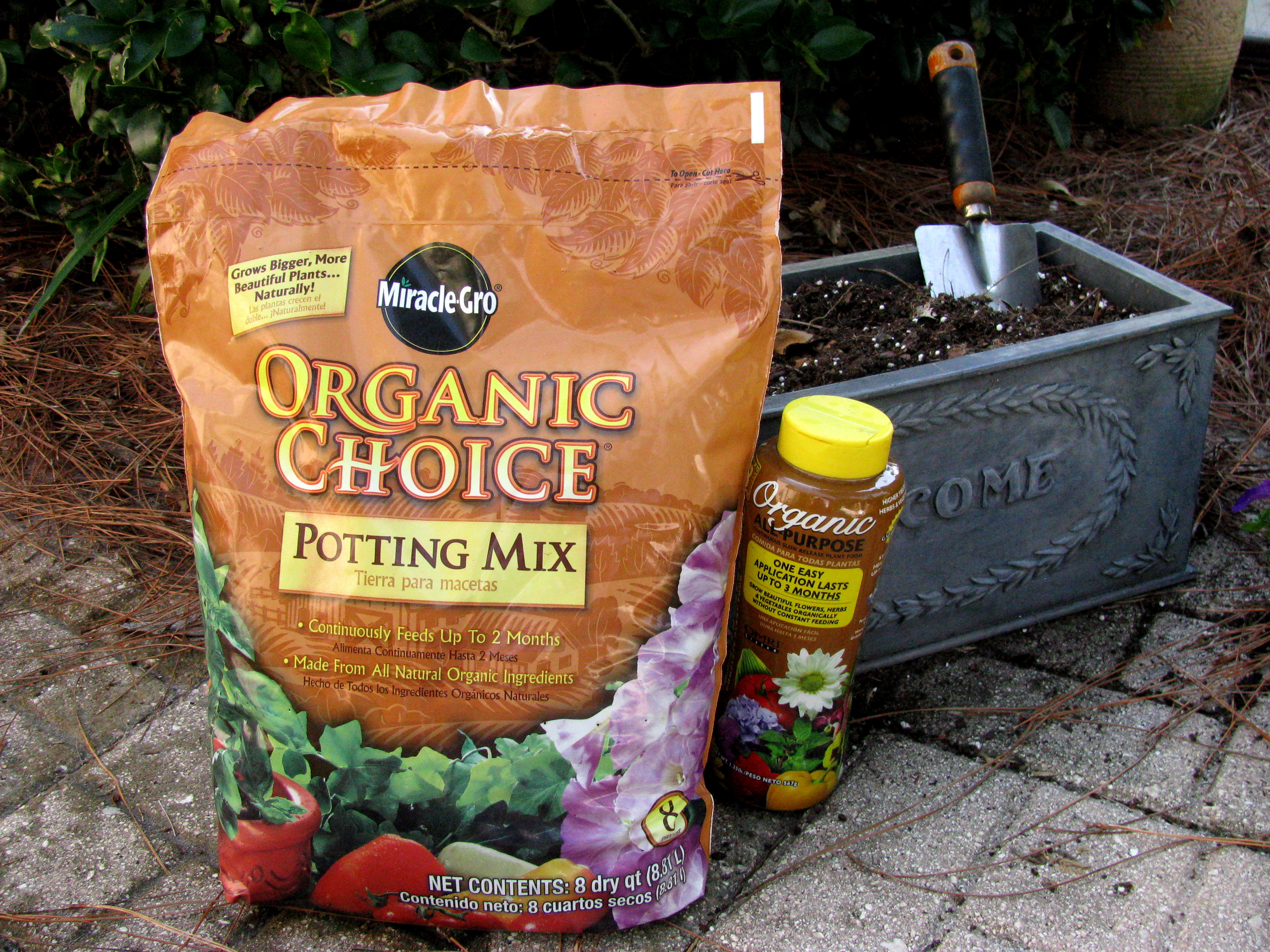
Choose a potting soil that is light for the size of the bag. One with perlite, peat moss and milled bark
will provide good drainage. Using manufactured potting soil instead of soil from your landscape will avoid most soil
borne diseases and pests.
Now the fun starts as you design the
pot. A good combination is a trio of different plants; a thriller, 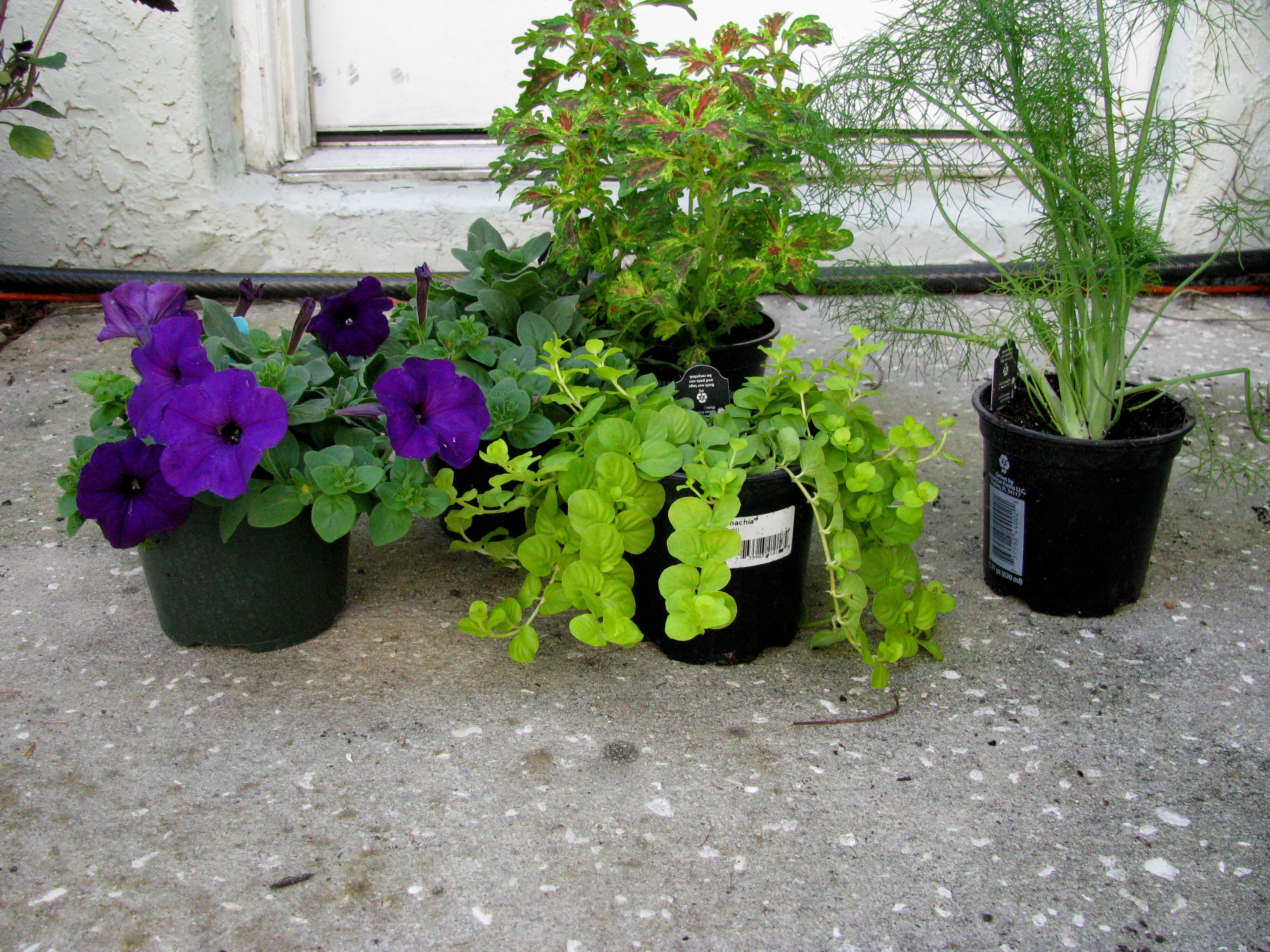 filler, and a spiller. The thriller is a tall accent plant, fillers are mounding plants and spillers are
trailing plants. You may need more than three plants if it is a large
pot. In the pot that I am creating in the pictures, there are two thrillers since is it a longer rectangular
pot, a coleus and, just for fun, an edible fennel plant. The fillers are purple petunias
and the trailing spiller is Lysimachia ‘Goldilocks’. In a round pot you would want
to stick with one tall accent plant and add multiples of the mounding and/or trailing plants. Be
bold with color. Choose plants with contrasting foliage and flower colors. filler, and a spiller. The thriller is a tall accent plant, fillers are mounding plants and spillers are
trailing plants. You may need more than three plants if it is a large
pot. In the pot that I am creating in the pictures, there are two thrillers since is it a longer rectangular
pot, a coleus and, just for fun, an edible fennel plant. The fillers are purple petunias
and the trailing spiller is Lysimachia ‘Goldilocks’. In a round pot you would want
to stick with one tall accent plant and add multiples of the mounding and/or trailing plants. Be
bold with color. Choose plants with contrasting foliage and flower colors.
Fill the pot a little more than half way with potting soil and then begin
placing the plants. You will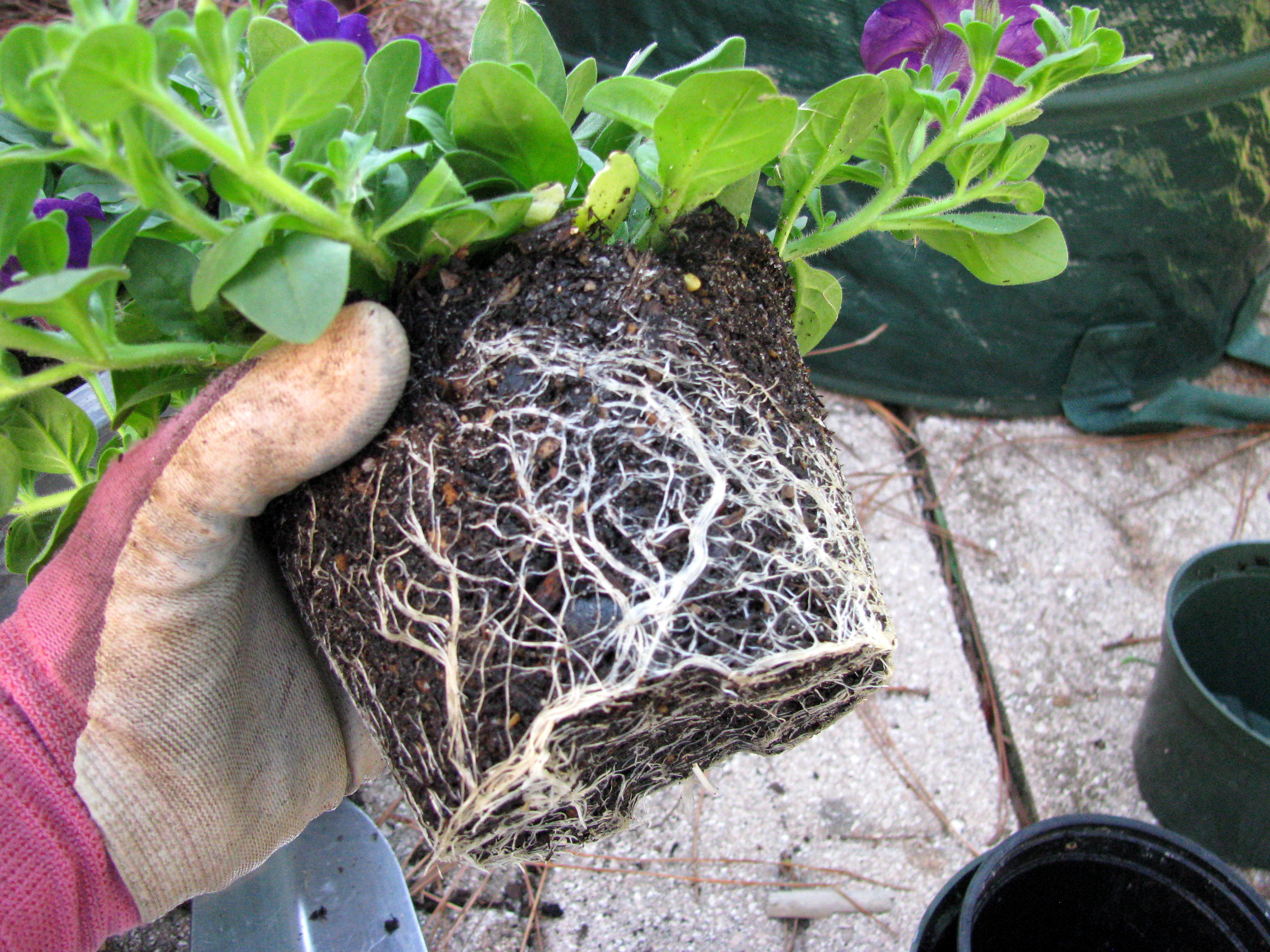 want the soil to be about 1 – 2 inches below the rim of the pot when you are finished planting to allow space for watering. As you remove each plant from its pot, loosen the roots a little so that they will grow
out into the potting soil. Be careful to keep each root ball level with the final top of the potting
soil. Water well as you plant to settle the soil around each plant. Apply a balanced slow release fertilizer (13-13-13) as you complete your planting. want the soil to be about 1 – 2 inches below the rim of the pot when you are finished planting to allow space for watering. As you remove each plant from its pot, loosen the roots a little so that they will grow
out into the potting soil. Be careful to keep each root ball level with the final top of the potting
soil. Water well as you plant to settle the soil around each plant. Apply a balanced slow release fertilizer (13-13-13) as you complete your planting.
Containers can dry out quickly since fall and winter is usually quite
dry here in Central Florida. Give your container water when the top one inch of the soil feels dry. Unglazed pottery may need water daily while it is still warm. 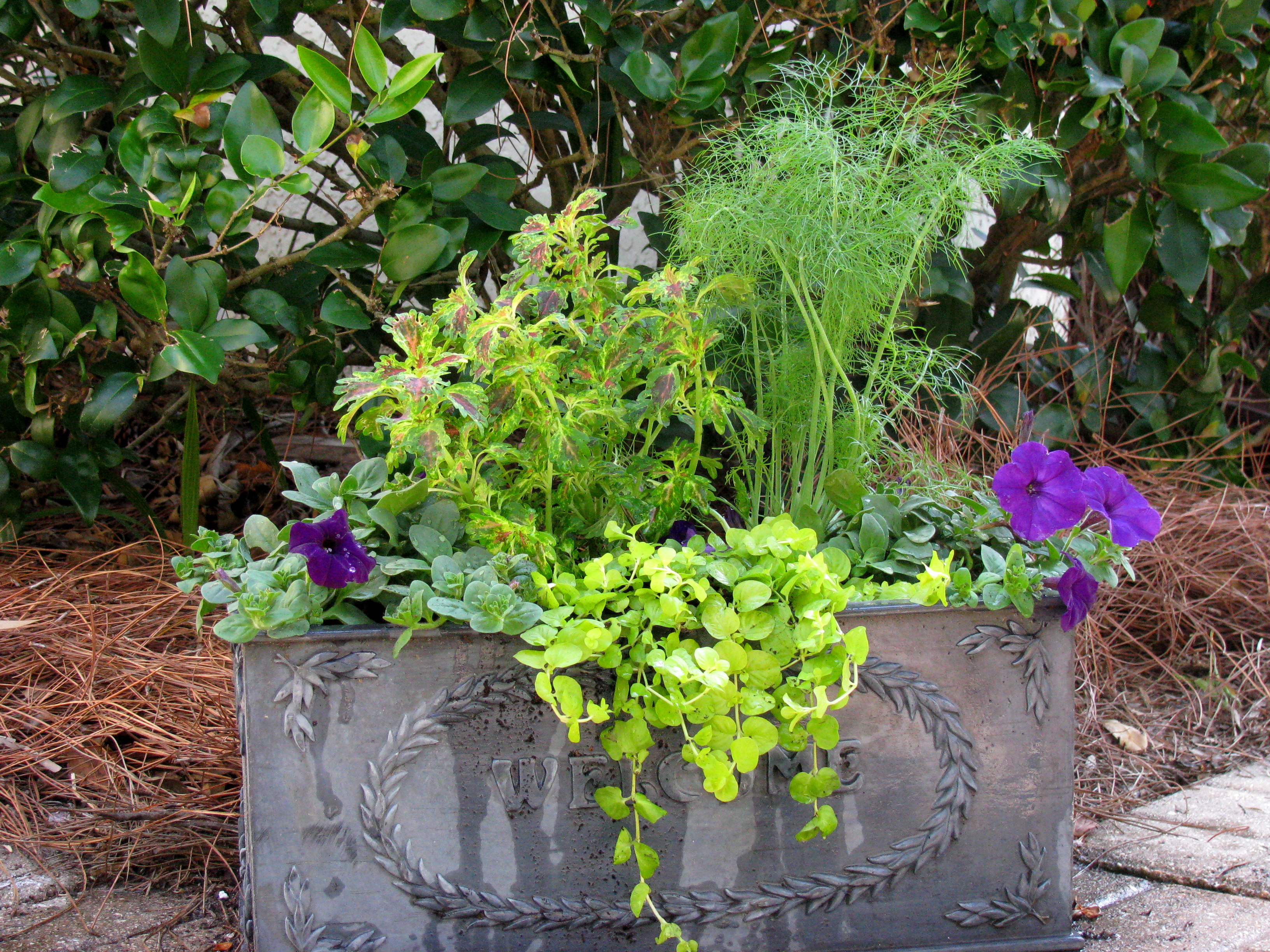
Scout
for pests often, deadhead flowers frequently, and prune lightly to keep everything in shape. Annual flowers
need plenty of fertilizer to continue looking good, so apply the same balanced fertilizer to your pot again in mid January.
Your creation should last until spring if we have a mild winter or if you have chosen cold hardy plants.
Happy gardening,
Pam
7:53 pm edt
Saturday, October 2, 2010
Time for Vegetable Gardening
Important steps for a Vegetable Garden:
1.
Choose the
proper site – near the house and close to source of waterVegetables need 6 hours of full sun. Watch out for tree roots and
choose a site that is well drained where water doesn’t pool or stand. Our prime gardening time is
October to May, so consider where the sun is in the sky. In fall the sun moves towards the south and is
most southerly during the winter, then slowly moves back towards directly overhead by summer. Consider
whether trees will produce more shade during the growing time for your vegetables. A little shade can be
a good thing for extending the growing season into early summer for leafy veggies like lettuce and chard. Do
you need a fence to keep out small critters? A tall fence can serve as the trellis for beans, tomatoes,
cucumbers etc.
2. Make a plan – decide what you want to grow. What
do you like to eat? Use the University of Florida/IFAS Vegetable Gardening Guide (VGG) (http://edis.ifas.ufl.edu/vh021) to determine the proper planting times. You will be planting different vegetables at different times.
Decide if you will grow your own transplants from seed. You will get the best variety this way, but it
requires more advance planning. Some veggies do best seeded directly into the soil. Watch
sun patterns and plant tall crops where they will not shade shorter crops. If you have not vegetable gardened
before, start small until you get some experience.
3. Prepare the soil - Summer is the best time to get
your garden ready for a full early fall planting. You can also solarize the garden plot to help reduce
soil borne insects and diseases. During the summer you can compost directly in the ground – bury
vegetable kitchen waste, coffee grounds, etc and wait for it to decay (at least a month) – spade well when you are ready
to plant. If using uncomposted manure – wait 3 – 4 months before planting. If
you are just now getting started, add organic matter; compost is great for gardens; watch for tree & shrub roots since
they compete for water and nutrients. You can trench and put roofing paper inside as a barrier to roots.
4. Get
the soil tested for pH. Best
for vegetables is 5.8 – 6.8, but 5.5 – 7 is okay. When you
receive your results you will also receive recommendations for adjusting your pH to the proper levels. However,
if your soil is naturally above a pH of 7, there is no reliable way to lower the pH – it will only be temporary –
you might consider containers or raised beds with manufactured soil.
5. Consider starting a compost pile or
bin. Compost is sometimes called garden gold – compost adds needed organic matter to Florida’s
infertile native sandy soils.
6. Fertilizer and Water are essential – Vegetables cannot tolerate standing water- but they need adequate
soil moisture to grow and produce. Sandy soils amended with considerable organic matter will hold moisture
better. Consider using mulch after your garden is planted to also help with water retention.
Micro-irrigation is really great for gardens – it can be as simple as running a soaker hose up and down each
row, or you can install a more elaborate system. Young plants will need a light watering more frequently
– as the plants mature, water deeply less frequently. Seeds need constant moisture until they have
sprouted and have two sets of leaves.
Vegetable plants grow fast and need plenty of nutrients to fuel that growth. Incorporate
a balanced fertilizer (6-6-6) in the garden just as you plant and then band fertilizer down rows two to three times during
the growing season. Refer to the Veg. Gardening Guide for amounts to use. Don’t
use lawn fertilizers on vegetables – Nitrogen is too high and potassium too low.
7.
Pests
can be a challenge in a veggie garden. Here are some strategies:
·
Plant at the recommended planting date
· Rotate vegetables so that the same veggie family is not planted in the same location repeatedly
·
Work the soil in advance of planting
– remove grass, weeds, roots, etc.
· Control weeds in and around garden – use mulch like straw
and fallen leaves, newspapers, it is best not to use wood mulches.
·
Purchased transplants should be pest
free and very healthy
· Keep plants vigorous and in great health to ward off pests
·
Put collars around transplants to protect
from cut worms – collar should extend at least 1 inch below and several inches above the ground.
·
Scout often (twice/week) for pests and
remove any you see - or remove diseased plants.
· Learn to identify beneficials – plant some flowers in and
around veggie garden to attract pollinators and beneficial insects
· Many plants will produce well even with 10 – 20 percent leaf
loss. Don’t panic too early.
· Harvest fruiting crops like tomatoes, peppers, squash and beans
when ripe – overripe produce can attract additional insects.
· Remove plants as soon as they stop producing.
·
Add organic matter to soil
·
Solarize soil during the summer
Use pesticides wisely – not all pesticides are labeled for use on vegetables –
learn to identify the pest and read the label to be sure that the insect and the vegetable are listed. Follow
all directions on the label and wear listed safety gear. Don’t apply on windy days. For
slugs and snails – use a product containing iron phosphate – it is safe around pets and other animals.
Apply pesticides in late afternoon or early evening when bees and other pollinators are less active. The
VGG has a list of pesticides and their uses.
Fungus diseases can usually
be controlled with sulfur, horticultural oils (especially Neem oil) and chemicals like cholorothalonil, maneb or mancozeb.
Sprays are generally more effective than dusts. Remember, fungicides only prevent fungal diseases,
they cannot cure them.
8. If
you don’t have room for a conventional vegetable garden - consider some alternatives.
Containers are very convenient – just choose one large enough for your plant to have a good root system.
Several commercial self-watering systems on the market. You will definitely need to use a good fertilizer
with micro-nutrients added. Also, put some compost in the mix – about 1/3 of the volume.
Edible landscaping is also an option. Putting
vegetable plants in among your ornamentals, such as a border of red lettuce, or a pepper or two tucked in with your annuals.
It is possible to grow some veggies just about anywhere there is ample sun.
Up –side- down planters for tomatoes are out there.
It just requires a sunny site and a place to hang the planter.
Happy Gardening,
Pam
5:46 pm edt
|
|
To subscribe to this blog - click on XML icon.
|
 |
|
|
|
 |
|
|
Pampered Gardeners LLC * Oldsmar, FL * USA * Phone: 727 483-3783 * pam@pamperedgardeners.com
|
|
|
 |

